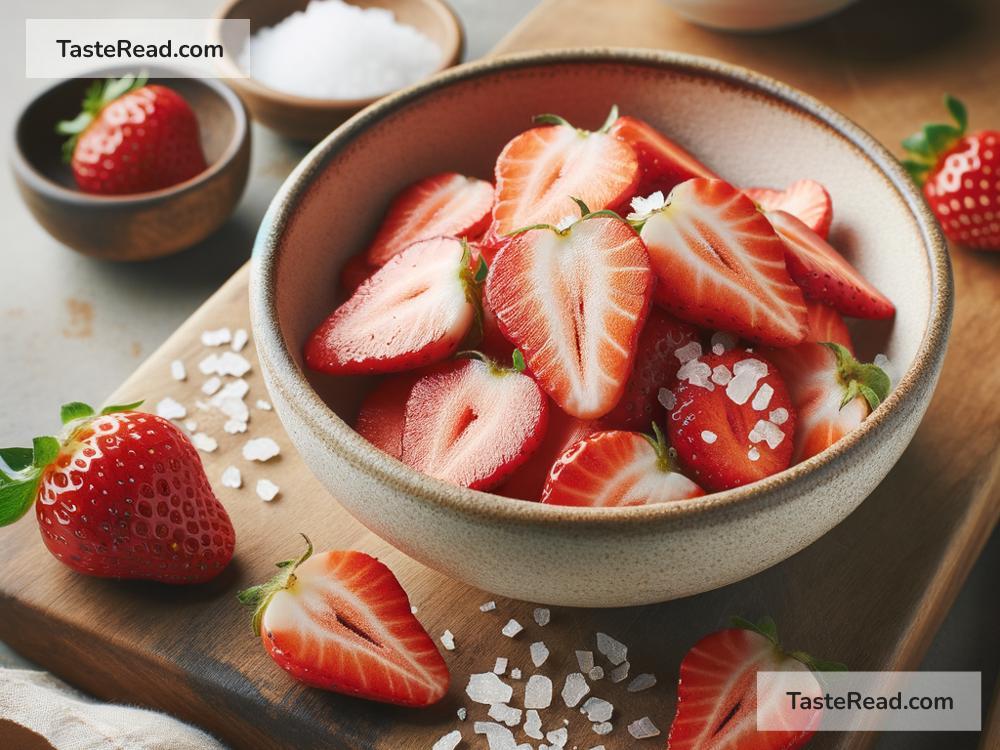How Salt Enhances the Natural Sweetness of Fruits
Have you ever heard of sprinkling a tiny bit of salt on fruits to make them taste sweeter? It might sound unusual, but it’s a surprisingly common culinary trick. Most people associate salt with savory dishes, yet adding just a pinch to naturally sweet foods can make their flavors truly shine. In this blog, let’s explore how salt enhances the sweetness of fruits and why this simple kitchen hack works so well.
The Science Behind Salt and Sweetness
Salt, or sodium chloride, is one of the most basic yet fascinating ingredients in our kitchens. It doesn’t just make food “salty”; it also influences how we perceive other flavors on our tongues. Our taste buds can detect five main flavors: sweet, salty, sour, bitter, and umami (savory). These tastes interact with one another in complex ways.
Here’s where salt shines—it’s a master at balancing flavors. When you add even a small amount of salt to sweet foods like fruits, it can amplify the sweetness while toning down any unwanted bitterness or sourness. Think of it like adjusting the brightness on a photograph. Salt acts as a taste enhancer, making the natural flavors pop.
How Salt Works Its Magic on Fruits
Fruits are naturally sweet because they contain sugars like fructose and glucose. However, fruits don’t always provide a perfectly sweet experience. Depending on the type of fruit, its ripeness, or even varieties, there might be hints of bitterness, sourness, or astringency. Salt helps smooth out these “rough edges.”
For example:
– Bitterness: Some fruits, especially grapefruits, melons, or underripe strawberries, can have hints of bitterness. Salt reduces our sensitivity to bitterness and allows the sweetness to stand out more prominently.
– Sourness: Fruits such as pineapples, kiwi, or citrus fruits can be tart. Salt counterbalances sourness, making these fruits taste sweeter.
– Flavor intensity: Salt enhances fruity aromas and flavors by waking up your taste buds and creating a deeper, more vibrant experience.
Interestingly, when sprinkled lightly, salt doesn’t make fruits taste salty—it simply unlocks more layers of sweetness hidden within them.
Which Fruits Pair Well With Salt?
While you can experiment with salt on nearly any fruit, some combinations are crowd favorites. Here are a few delicious fruits that pair wonderfully with a sprinkle of salt:
-
Watermelon: Watermelon is one of the most popular fruits to eat with salt. Adding a pinch gives it a richer, sweeter taste while highlighting its juicy texture. You might even avoid bland bites by drawing more flavor out of the fruit.
-
Pineapple: The tropical tang of a pineapple can sometimes lean too sour. Salt brings out its sugary notes and makes it taste less acidic.
-
Melons: Cantaloupe and honeydew benefit greatly from a touch of salt. It deepens their sugary sweetness and balances out any bitterness they might have.
-
Citrus Fruits: Oranges, grapefruits, and tangerines become sweeter and less tart with a light sprinkle of salt.
-
Berries: Strawberries, blueberries, and raspberries sometimes taste mildly bitter or sour when they’re not perfectly ripe. A tiny pinch of salt enhances their sweetness and brings out their juicy flavors.
-
Mango: A ripe mango is already a sweet treat, but adding salt brings out its rich, tropical flavor even more.
How to Use Salt on Fruits
While salt can be transformative, you have to use it carefully. Too much can overpower the natural flavor and make your fruits taste unpleasantly salty. The goal is to accentuate sweetness, not smother it.
Here are some tips for using salt with fruits:
-
Choose the right type of salt: Fine-grain salt is commonly used, but some people prefer the delicate crunch of flaky sea salt. Experiment with different salts to see what you like best.
-
Start small: Sprinkle just a tiny pinch of salt over your fruit. You can always add more if needed.
-
Mix it up: Toss cut fruits like berries or melon with a pinch of salt so it’s evenly distributed. For larger pieces (like whole slices of watermelon or mango), sprinkle salt directly on top.
-
Pair with other flavors: For an extra twist, combine salt with chili powder, lime juice, or honey. These combinations are popular in countries like Mexico and Thailand, where sweet-savory snacks are celebrated.
Why You Should Give This a Try
Adding salt to fruit might feel a bit unconventional, especially if you’ve grown up eating fruits plain or with sugar. But once you give it a try, you’ll see why so many people swear by this trick. Whether it’s balancing tartness, minimizing bitterness, or intensifying sweetness, salt can elevate fruits in ways you might not have expected.
It’s also a fun way to experiment with flavors. Imagine serving sliced watermelon with a sprinkle of salt at your next picnic or enjoying strawberries with a dash after a meal. You’ll impress guests and discover new ways to savor nature’s sweetest treats.
Final Thoughts
Salt is a flavor enhancer, not just a seasoning. By slightly altering how we experience sweetness, a simple pinch can make fruits taste better than ever. So next time you bite into a slice of watermelon or a handful of berries, don’t be afraid to reach for the salt shaker. It’s a small change that makes a big difference!


